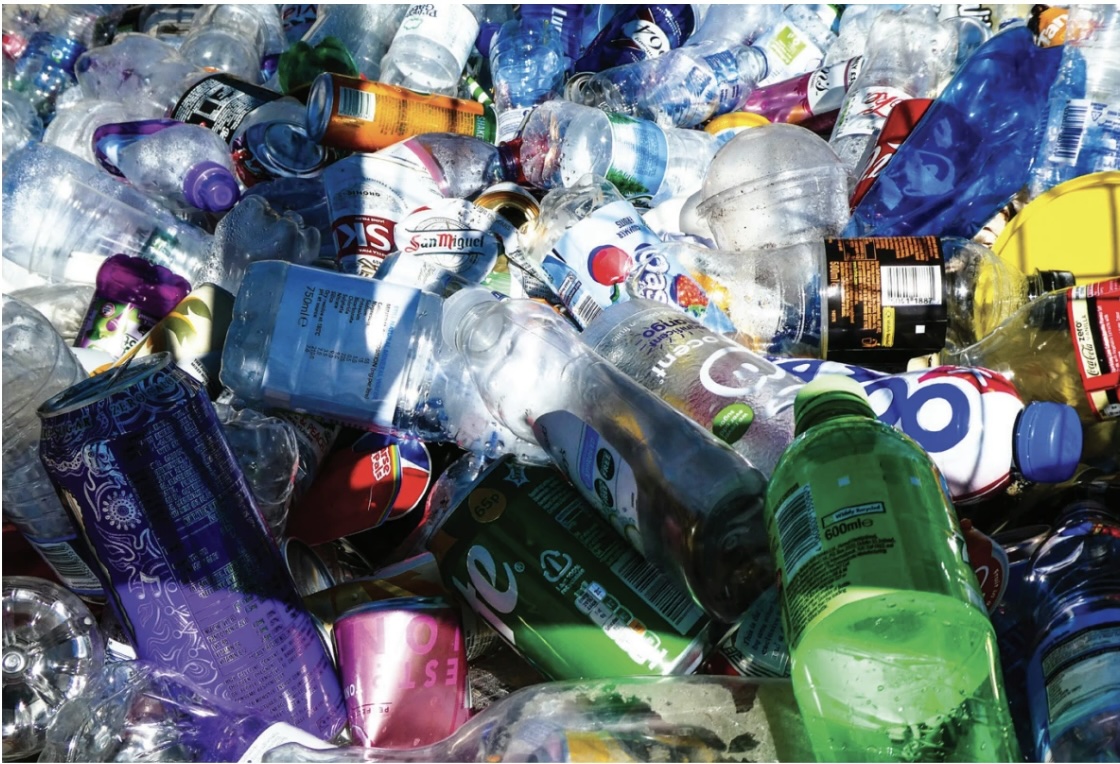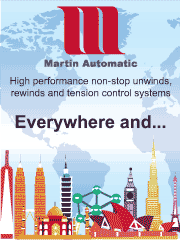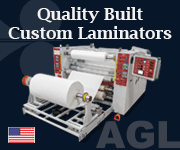Speaking the Language of Sustainability for Printers and Converters
- Published: May 29, 2025

By Joanna Stephenson, Managing Director, Think b2b Marketing Ltd.
Those of us who have spent time in the printing and packaging industry know it's a sector marked by incredible innovation, ingenuity and inspiration. From advances in sustainable materials and ink chemistries to breakthroughs in recyclable solutions, our industry continues to push boundaries in environmental stewardship.
However, a new challenge has emerged for printers and converters — one that doesn't center on operational sustainability, but rather on how we communicate these achievements to the market.
There's a lingering misconception in our industry that as B2B businesses, printers and converters don't need to focus on marketing in the traditional sense. The old adage was that print always sells itself— through quality, service and word of mouth.
However, in today's hyper-competitive landscape, a passive approach simply doesn't cut it anymore. Progressive printing businesses understand that strategic external communications are essential to building and maintaining a strong customer pipeline.
Whether it's through digital channels, trade media or direct marketing, actively sharing your story and capabilities with potential partners and customers has become non-negotiable. And when it comes to sustainability achievements, HOW we communicate has become perhaps even more important than WHAT we're saying.
 Navigating the Regulatory Landscape
Navigating the Regulatory Landscape
The Federal Trade Commission's Green Guides have long provided the framework for environmental marketing claims in the U.S. While these guidelines haven't seen major updates since 2012, we're all seeing a significant shift in how they're being enforced, with the FTC taking a more active stance on reviewing and challenging unsubstantiated environmental claims.
Heightened scrutiny, combined with increasing consumer skepticism and brand owner demands, means printers and converters must carefully consider how they communicate their sustainability credentials.
The environment for sustainability communications is evolving with speed. Across the Atlantic, we're seeing the introduction of strict new regulations like the EU's Green Claims Directive and the UK's Green Claims Code, which moderate the language businesses can use when describing elements of sustainability. While these don't directly impact domestic U.S. printers, they do affect those operating in the European market or working with international brands. And more importantly, they offer valuable insight into where the regulatory landscape might be heading in the U.S.
The reality is that sustainability claims are under the microscope like never before, and for good reason. We've all seen companies face backlash for environmental claims that, while technically true, lacked proper context or substantiation. Our industry, which has made tremendous strides in sustainability, cannot afford to fall into this trap.
From Generic Claims to Data-driven Communication
Remember when terms like "eco-friendly" and "green" were enough to convey environmental consciousness? Those days are long behind us, and now it's a question of clarity and transparency.
The enemy here is "greenwashing" — the practice of making environmental claims that are misleading, vague or cannot be substantiated. It's become a significant problem across both B2B and consumer markets, eroding trust and making it harder for businesses making genuine environmental progress to stand out. In fact, recent studies suggest that more than 50 percent of environmental claims lack proper substantiation, which is precisely why we're seeing new protective regulations emerge in markets like the UK and Europe.
Today's sustainability communications require a much more nuanced and technical, data-driven approach. This is particularly challenging in an industry as complex as ours, where environmental impacts span everything from raw material sourcing to end-of-life recyclability.
Brand owners, especially those in consumer-facing sectors, are under increasing pressure to validate their supply chain's environmental credentials. The printers and converters they rely on, including some of our international packaging clients at Think B2B Marketing, need to provide them with clear, compliant information they can use in their own sustainability reporting. This means translating technical expertise into language that resonates with brands, while maintaining accuracy under FTC guidelines.
The most successful printers in this new market dichotomy will be those who embrace radical transparency in their sustainability communications. This means being upfront about both achievements and challenges. If a particular substrate or process isn't fully sustainable yet, acknowledge this while highlighting the steps being taken toward improvement.
From my own experience, brand owners would much rather work with a printer who is honest about their sustainability journey and verifies with clear data, over one making claims that are bigger, but sweeping and unsubstantiated.
Credibility Through Specificity
 The way we approach these communications matters. Consider how your printing operation might have, for example, invested in water-based inks to reduce VOC emissions. Rather than simply stating, "We use environmentally-friendly inks," which could raise red flags with regulators (environmentally-friendly how?), we need to communicate the tangible benefits. What's the measurable reduction in VOC emissions? How does this impact air quality? What's the broader environmental benefit? Context is everything, and this is something we always push our clients on. This level of detail not only satisfies regulatory requirements but also provides valuable information that brand owners can use in their own sustainability reporting.
The way we approach these communications matters. Consider how your printing operation might have, for example, invested in water-based inks to reduce VOC emissions. Rather than simply stating, "We use environmentally-friendly inks," which could raise red flags with regulators (environmentally-friendly how?), we need to communicate the tangible benefits. What's the measurable reduction in VOC emissions? How does this impact air quality? What's the broader environmental benefit? Context is everything, and this is something we always push our clients on. This level of detail not only satisfies regulatory requirements but also provides valuable information that brand owners can use in their own sustainability reporting.
Energy efficiency provides another telling example. Many printing operations have made significant investments in energy-efficient equipment and processes. Yet too often these achievements are reduced to vague claims about "reducing our carbon footprint." In Europe, and perhaps in the U.S. too if similar language restrictions come into force, that simply isn't good enough.
Instead, consider communicating specific improvements: actual measurable reductions in energy consumption, investments in renewable energy, or concrete steps taken to optimize production schedules for energy efficiency. This specificity not only protects against regulatory scrutiny but also helps build credibility with increasingly knowledgeable customers.
Waste reduction represents perhaps the most significant opportunity for meaningful communication. The printing industry has made remarkable progress in reducing waste across the entire production process. From advanced pre-press techniques that minimize make-ready waste to closed-loop recycling systems for production materials, there's a very compelling story to tell.
However, it needs to be told with precision and backed by data. What percentage of materials are being recycled? How have improved processes reduced substrate waste? What happens to the waste that is generated?
The challenge lies in communicating these technical achievements in a way that resonates with different audiences while maintaining regulatory compliance. Brand owners need different information than retail customers, who in turn have different needs than regulatory bodies. Successfully navigating these varied requirements demands a thoughtful, strategic approach to sustainability communications. It can certainly feel like a lot of different plates to juggle, especially for those without a dedicated marketing partner.
An Eye to the Future
The EPA's increasing focus on environmental protection and the potential for stricter regulations means we should expect even greater scrutiny of environmental claims. States like California are already leading the way with more stringent requirements for environmental marketing claims, potentially previewing what's to come at a federal level. Some industry observers anticipate the FTC may soon undertake a review of the Green Guides, potentially introducing more specific requirements for environmental marketing claims. It certainly wouldn't be a surprise.
However, stricter regulation shouldn't discourage printers from communicating their sustainability achievements. Instead, it should push us to be more precise and more transparent in how we share our environmental progress. This means moving away from broad, generic claims about being "green" or "eco-friendly" and instead focusing on specific, measurable achievements that can be clearly documented and verified.
The printing industry has always been at the forefront of innovation, constantly adapting to new technologies and market demands. Now we need to apply that same innovative spirit to how we communicate our sustainability efforts. This means developing clear, consistent messaging that resonates with customers while meeting increasingly stringent regulatory requirements.
It's something we champion; when we begin working with international printing and converting businesses, we always begin with clarity in message. If we get the right narrative thread in place, and what we're saying is clear, realistic and honest, it becomes a lot easier to then connect with the needs of the market.
For those of us serving the printing and packaging industry, sustainability communications are no longer just about making the right claims — they're about backing those claims with data, specificity, and unwavering transparency. By embracing these changes now, U.S. printers and converters can position themselves as trusted partners in their customers' sustainability journeys, and doing so, build a much stronger future for the industry.
The printing and packaging industries are pivotal in our collective fight to protect the natural world and its natural resources.
And that's a story worth telling right.
About the Author
Think B2B Marketing is an award-winning international B2B marketing agency specializing in developing bespoke communications strategies for businesses in the print, packaging, labels, life sciences, manufacturing and technology sectors. For more information, visit www.thinkb2bmarketing.com.













